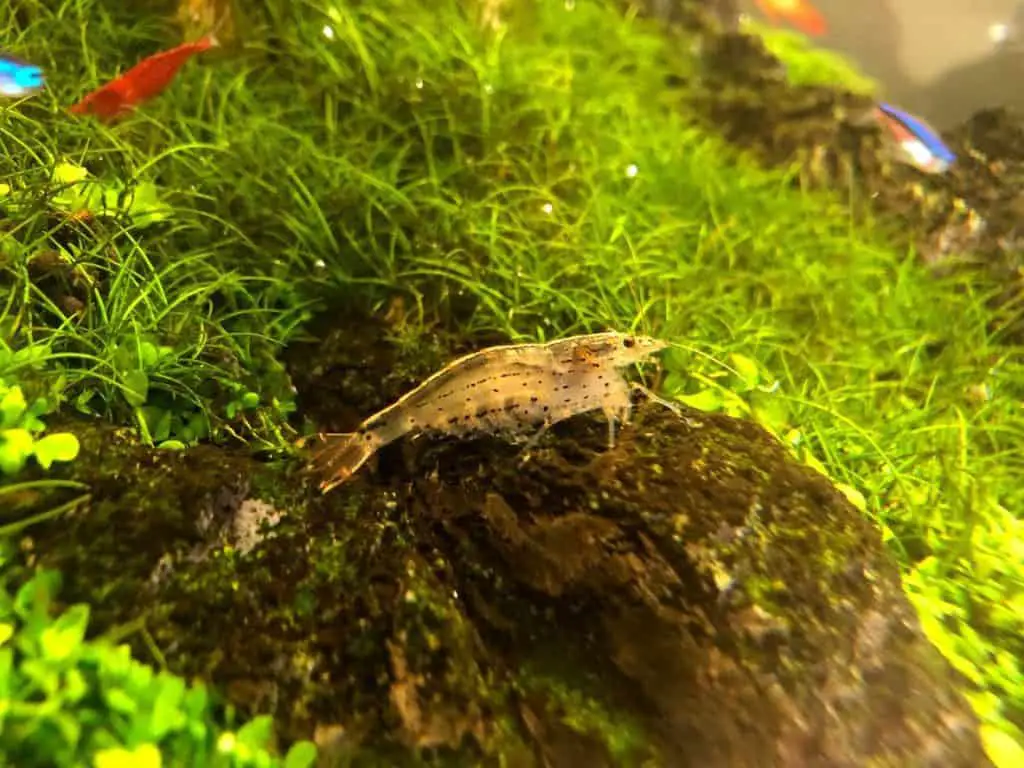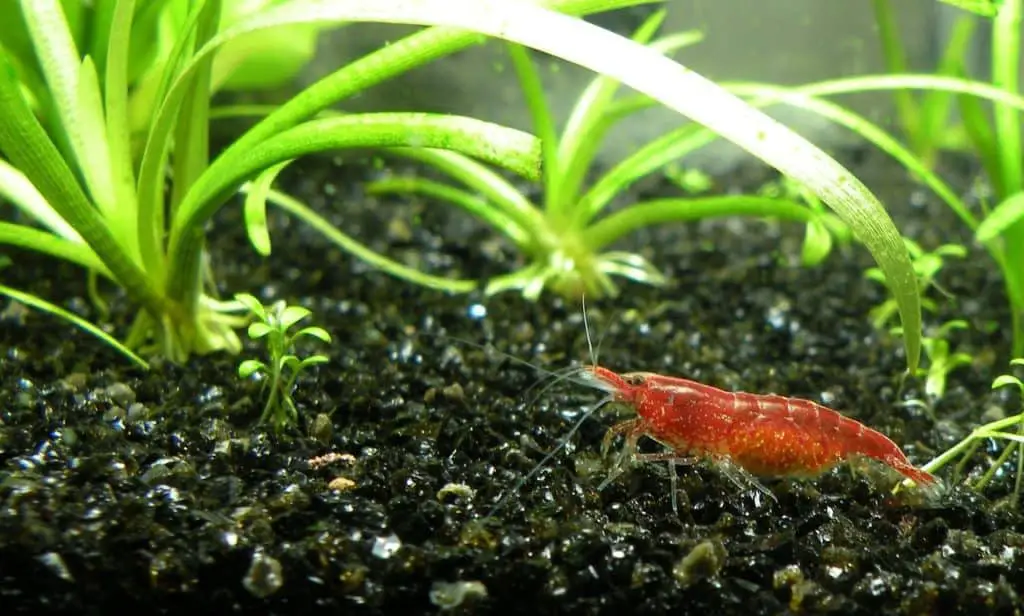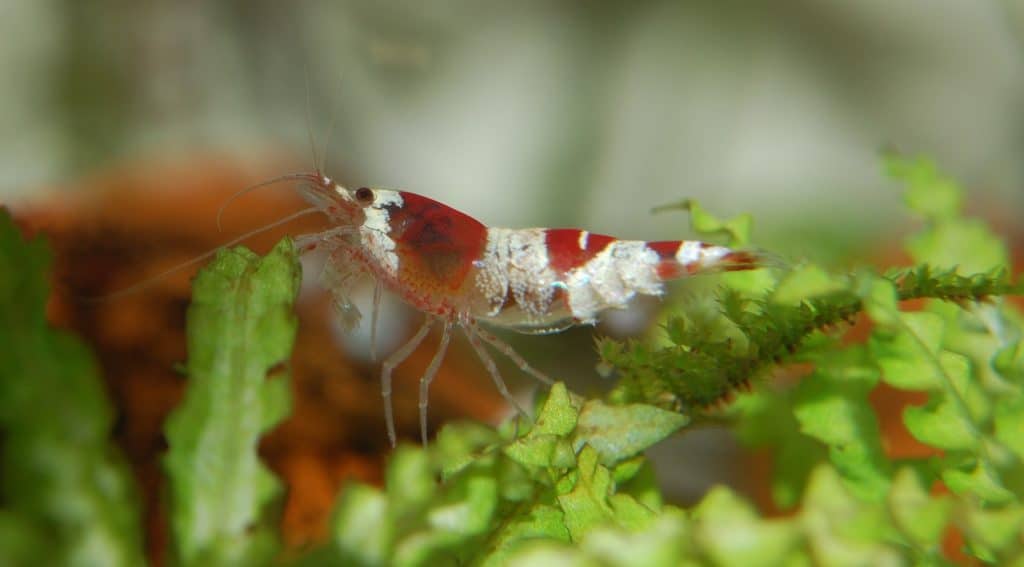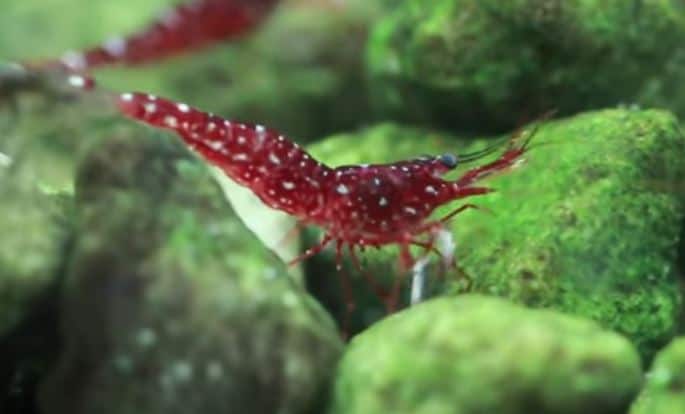Shrimp are natural cleaners of your aquarium, and almost all shrimp eat algae. A Shrimp can be perfect for algae control in your tank, but not all shrimp eat all types of algae. For shrimp, eating algae provides them with essential nutrients for daily activities and long-term survival. It also helps them build their immunity to diseases, allowing them to live longer.
The best Algae eaters are the Amano shrimp. For a good reason, the Amano shrimp, or Caridina japonica, is also known as the “Algae Eating Shrimp.”
The Amano shrimp is one of the best algae-eating shrimp out there but not the only one. Most shrimp will eat algae, but not all shrimp will eat all types of algae.
First, we will look at what kind of algae Amano shrimp eat, and then we will look at the alternatives to the Amano shrimp.
What Kind of Algae Will Dwarf Shrimp Eat?
Most dwarf shrimp will eat hair algae, brush algae, and most types of string algae. Most shrimp will not eat black beard algae, but there are mentions of Amano shrimp eating them, but I have not been able to confirm this myself yet.
Do All Shrimp Eat Algae?
Not all shrimp eat algae. While many species of shrimp are herbivorous and rely on algae as their primary food source, there are also species of shrimp that are omnivorous and will consume a wider variety of foods, including small invertebrates and detritus in addition to algae.
It is important to note that the diet of a shrimp can vary depending on the species and the resources available to them in their habitat. Some species of shrimp may feed primarily on algae, while others may feed on a combination of algae and other food sources. In addition, the diet of a shrimp may change throughout its lifetime, with some species switching from a herbivorous diet to an omnivorous diet as they mature.
Overall, while algae can be an important part of the diet of many shrimp species, there are also other types of food that shrimp may consume.
Algae Eating Amano Shrimp

Amano Shrimp Size and Appearance
Amano shrimp are larger than cherry shrimp and can grow up to 2 inches (or about 5 centimeters). They are sometimes mistaken for ghost shrimp because of their size and translucence. Unlike Glass or Ghost shrimp, they have dark spots or dashes along the sides of their body, and they can also have shades of green or light brown on parts of their bodies.
When it comes to eating algae, Amano shrimp are the most efficient freshwater shrimp. How active they eat algae is one of the reasons why these shrimp were introduced and made famous by the late Takashi Amano, from whom they got their name. The Amano shrimp (Caridina multidentata, also known as Caridina japonica) is native to Japan.
Algae Eating Red Cherry Shrimp
The cherry shrimp is an omnivore and will eat almost anything. Red Cherry Shrimp (RCS) is also named neocaridina. Cherry shrimp are primarily algae eaters grazing off soft green algae and sometimes even green hair algae.

While cherry shrimp can eat algae, they’re not the most aggressive eaters. While eating green, brown, and soft algae, they’ll stay away from blue-green algae and staghorn algae. Hair algae is also an important food source for your cherry shrimp.
Cherry shrimp will also eat any other food that they can find. If they find enough food that is easier to get, they might go for that food source instead of grazing on the algae in your tank.
In most established tanks, where the cherry shrimp population isn’t too big, you hardly ever have to feed your cherry shrimp, and they will happily keep your algae in check.
Algae Eating Ghost Shrimp
Ghost shrimp are sometimes mistaken for Amano shrimp. Like Amano shrimp, they have a clear body and are about the same size. Unlike Amano shrimp, Ghost shrimp don’t have spots on the side of their bodies.
We have an article that goes more in-depth about the difference between Ghost shrimp and Amano shrimp here .
.
Ghost shrimp are excellent algae eaters. Like most shrimp, omnivores, and algae, they are on the menu. Ghost shrimp love to eat hair algae; they also love to scavenge for old fish food and even eat dead shrimp and fish.
The good thing about ghost shrimp is that they are not picky eaters, and they will eat just about any algae, including brush algae, and other algae-eating fish leave this type untouched. In addition, ghost shrimp are not only bottom feeders and can climb the plants and decorations of your fish tank, cleaning them while they go.
Although they eat algae, if there is another food source, they might go for this first. When Amano shrimp aren’t available, these are excellent alternatives. They are sometimes more readily available, often cheaper, and easy to breed, giving you an affordable, sizeable algae-eating team.
Algae Eating Crystal Red Shrimp

Do crystal red shrimp eat algae? Crystal red shrimp (CRS) will eat algae; they are good at eating algae but not as efficient as Amano shrimp. Almost the same size as cherry shrimp Crystal Red Shrimp is a little harder to keep than cherry shrimp.
The Crystal Red Shrimp is also known as the Caridina shrimp. They prefer a bit more acidic water conditions than the Neocaridina shrimp. You can achieve this by having an active substrate in your aquarium, usually some aqua soil. Because they need a little more consideration, you cannot put them in just any aquarium as a cleanup crew.
Algae Eating Malawi Shrimp
The Malawi Shrimp is a species found on Sulawesi island, and they should not be confused with Sulawesi shrimp, also found on the same Indonesian island. The Malawi shrimp is much easier to keep and breed than the Sulawesi shrimp and is much less colorful.
Tshrimprimp can be similar in appearance to the Amano and the ghost shrimp, as it can have a somewhat clear body. Unlike the Amano shrimp, the Malawi shrimp will, like the ghost shrimp, quickly breed in freshwater if it’s happy. If you are wondering if the Malawi shrimp will eat algae? Malawi shrimp will eat most algae.
Algae Eating Sulawesi Shrimp

Sulawesi shrimp are great algae eaters, and Sulawesi shrimp is also known as Caridina dennerli. Sulawesi shrimp feed on the same food most other Dwarf Shrimp eats, algae being no exception. A big part of keeping a healthy colony of Sulawesi shrimp is deliberately growing algae.
The downside to Sulawesi shrimp is that they need particular water conditions, which makes them unsuitable for most community tanks. If you want to get a grip on algae control in your aquarium, it is better to choose one of the other options.
Conclusion
Almost all shrimp are reasonable and will eat algae. If you are looking for shrimp to help eat algae in a community tank, I would consider Amano shrimp, Ghost shrimp, Cherry shrimp, and Malawi shrimp as an option.
Crystal red shrimp and Sulawesi shrimp are also good at eating algae but are better suited to keep in a species-only aquarium.
Here is a list of shrimp in the order I think you should consider them algae eaters.
| No. | Name | characteristics |
| 1. | Amano shrimp | great all-round algae eater, no chance of overpopulation |
| 2. | Ghost shrimp | a good alternative to the Amano shrimp can grow in large numbers |
| 3. | Neocaridina Shrimp (for example, the red cherry shrimp) | small, easy to keep, and have beautiful colors |
| 4. | Malawi Shrimp | a bit harder to find, but it is a great algae-eating option |
| 5. | Caridina Shrimp (for instance, the crystal red shrimp or the bee shrimp) | great option in a planted tank with PH-lowering aqua soil |
| 6. | Sulawesi shrimp | can be one of the most attractive looking shrimp, needs special care |
Related Questions
Do loaches eat algae? Loaches are not algae eaters. They are bottom feeders and often get mistaken for algae eaters. This mistake is mainly because some assume that all bottom feeders eat algae.
Do Mollies eat Amano shrimp? Mollies tend not to eat Amano shrimp because you usually buy the Amano shrimp at a size too big for them to eat, and they don’t multiply in freshwater; there are no baby Amano to eat. If you keep them in an aquarium with cherry shrimp, they will eat the shrimp babies if they get the chance.
